If you've ever taken a bite of authentic Coconut Ice Cream Thailand, you know it's more than just dessert — it's a tropical symphony of flavor, texture, and aroma. But here's the truth: the magic comes from traditional Thai ingredients like pandan, fresh coconut milk, and palm sugar — not Western spices. In this article, we'll dive into how to make authentic Thai coconut ice cream using time-honored techniques and ingredients that capture the essence of Thailand's street food culture. Let's get started!
Important note: Authentic Thai coconut ice cream traditionally uses pandan (香兰叶) as its signature flavoring, not cardamom, cinnamon, or nutmeg. These Western spices are not part of traditional Thai recipes. This guide focuses on genuine Thai ingredients and methods.
Table of Contents
- Top 5 Traditional Ingredients for Thai Coconut Ice Cream
- Why Pandan is the Heart of Thai Coconut Ice Cream
- How to Store Thai Ingredients for Maximum Freshness
- Buying Guide: Authentic Thai Ingredients for Coconut Ice Cream
- Step-by-Step: How to Make Authentic Thai Coconut Ice Cream
- Visual Comparison: Traditional Thai Ingredients
- Frequently Asked Questions About Thai Coconut Ice Cream
- Final Scoop: Master Thailand's Iconic Dessert
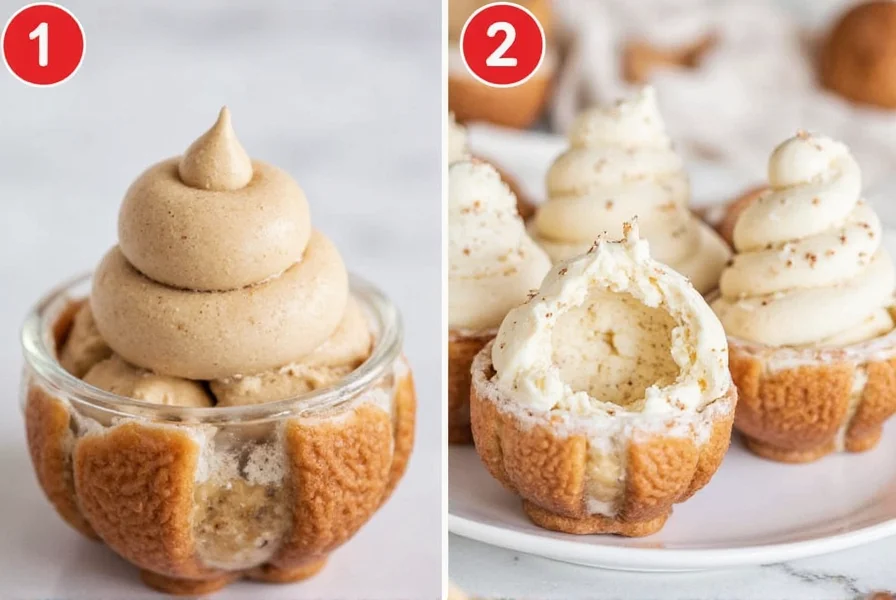
Top 5 Traditional Ingredients for Thai Coconut Ice Cream
- Fresh pandan leaves — The signature Thai flavoring agent with grassy, vanilla-like notes.
- Coconut milk (not cream) — Full-fat, unsweetened for authentic texture and flavor.
- Palm sugar — Traditional Thai sweetener with caramel-like depth.
- Coconut meat — Adds chewy texture and intense coconut aroma.
- Sea salt — Balances sweetness without overpowering the delicate flavors.
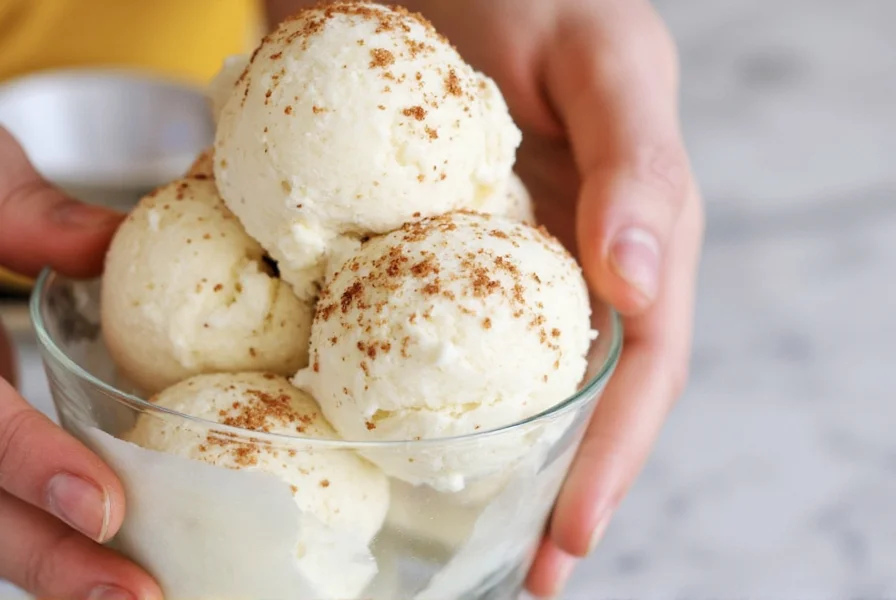
Why Pandan is the Heart of Thai Coconut Ice Cream
Thai desserts are celebrated for their subtle, natural flavors — and pandan (香兰叶) is the cornerstone of authentic Thai coconut ice cream. Unlike Western-style ice creams that rely on spices like cinnamon or cardamom, Thai recipes use pandan for its unique grassy-vanilla aroma and vibrant green color. This ingredient has been used in Thai cooking for centuries and is deeply rooted in the country's culinary traditions.
What Each Traditional Ingredient Brings to the Table
- Pandan: Earthy, floral, and slightly sweet — creates the signature Thai flavor profile.
- Coconut milk: Rich and creamy; provides the base texture and coconut essence.
- Palm sugar: Caramel-like sweetness with molasses undertones — far more complex than white sugar.
- Coconut meat: Adds chewy texture and reinforces the coconut flavor.
- Sea salt: Enhances sweetness and balances the richness of coconut milk.

| Ingredient | Best Storage Method | Shelf Life |
|---|---|---|
| Fresh Pandan Leaves | Refrigerate wrapped in damp paper towel | 7-10 days |
| Coconut Milk (Canned) | Sealed container in pantry (unopened); refrigerate after opening | 1-2 years (unopened); 3-5 days (opened) |
| Palm Sugar | Airtight container in cool, dry place | Indefinite |
| Coconut Meat (Fresh) | Refrigerate in sealed container | 3-5 days |
| Sea Salt Flakes | Airtight container | Indefinite |

Buying Guide: Authentic Thai Ingredients for Coconut Ice Cream
When selecting ingredients for authentic Thai coconut ice cream, quality and authenticity matter. Here's a curated guide to help you choose the right products:
1. Thai Pandan Extract (Pure)
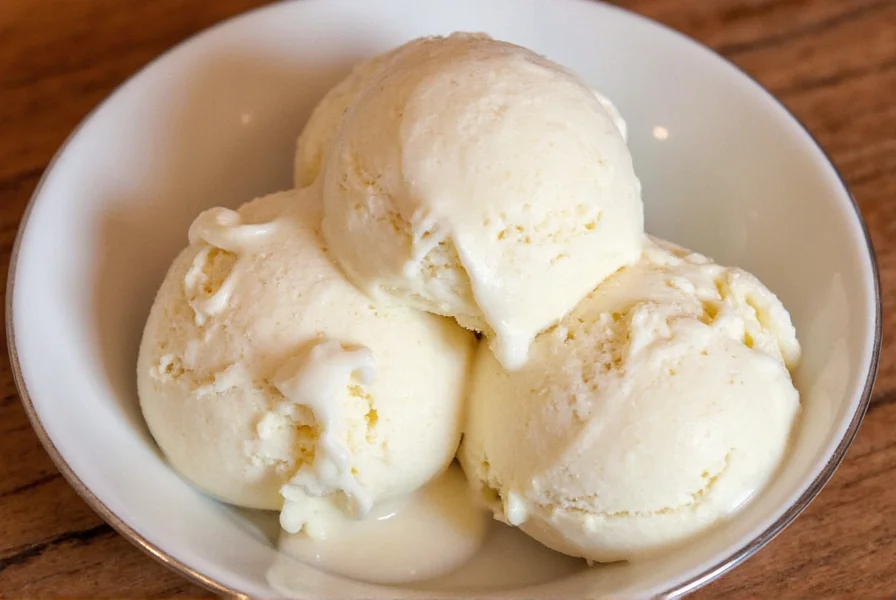
Features: 100% natural pandan extract, no artificial colors or flavors.
Advantages: Consistent flavor, easy to use in recipes.
Use Case: Add 1-2 tsp to coconut milk base for vibrant green color and authentic aroma.
Target Audience: Home cooks seeking convenience without sacrificing authenticity.
Best For: Traditional Thai ice cream recipes.
2. Aroy-D Full-Fat Coconut Milk
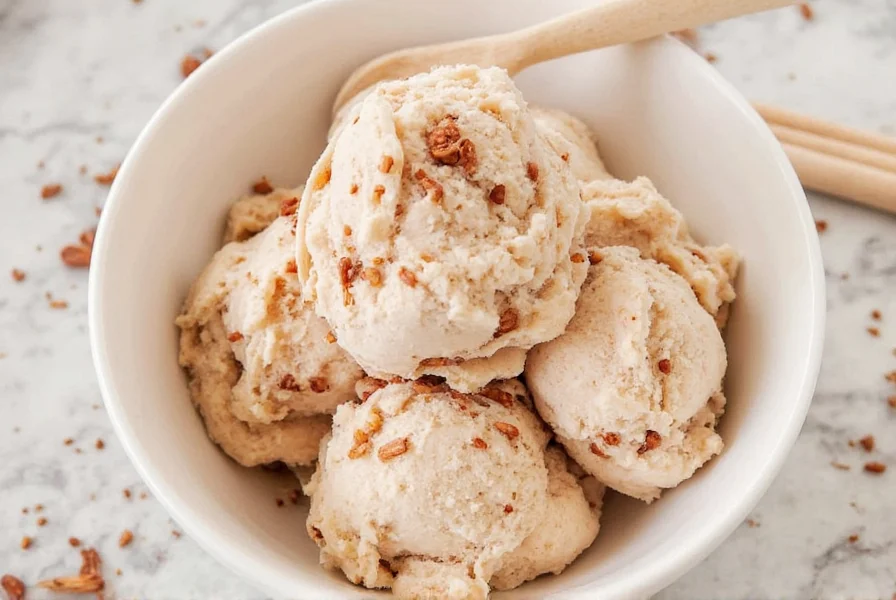
Features: Thai brand, no additives, high coconut content (60%+).
Advantages: Authentic Thai taste, creamy texture.
Use Case: Primary base for ice cream — use the thick cream layer at the top.
Target Audience: Serious home chefs wanting true Thai flavors.
Best For: Traditional Thai coconut ice cream.
3. Thai Palm Sugar (Block Form)
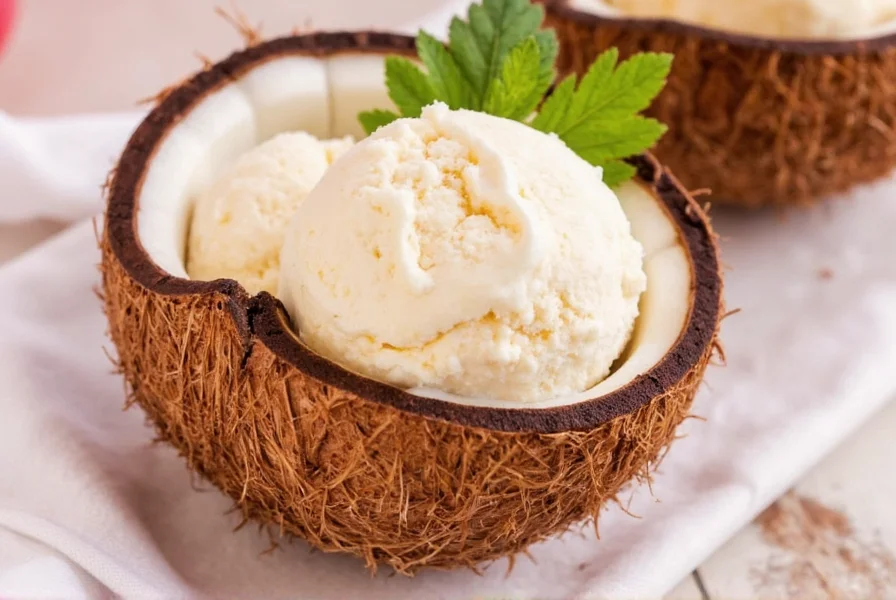
Features: Handmade from sap of coconut palms, unrefined.
Advantages: Rich caramel notes, no artificial sweeteners.
Use Case: Grate or dissolve in warm coconut milk for balanced sweetness.
Target Audience: Traditional cooks prioritizing authenticity.
Best For: Authentic Thai dessert recipes.
4. Fresh Coconut Meat (Frozen)
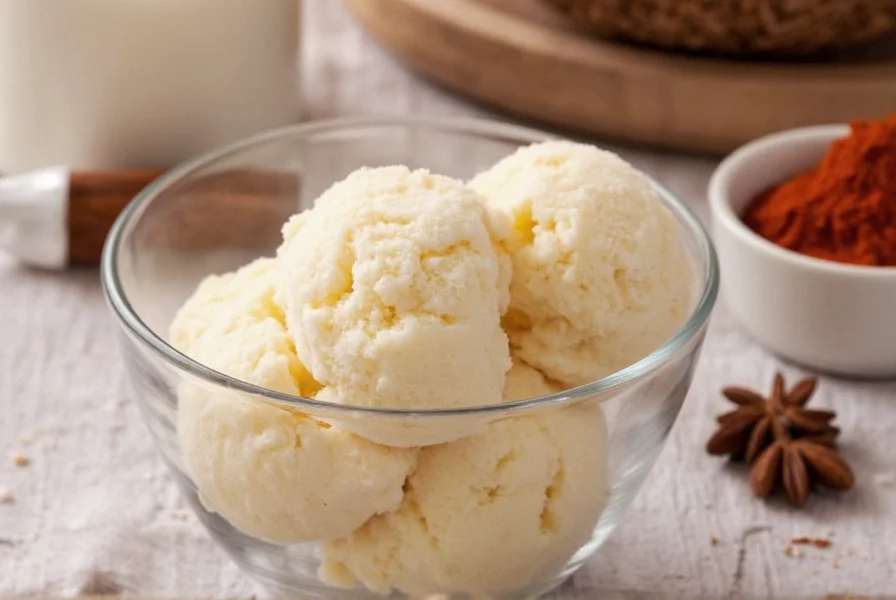
Features: Pre-cut, frozen for convenience.
Advantages: Retains natural texture and flavor.
Use Case: Chop into small pieces and fold into ice cream during churning.
Target Audience: Busy cooks wanting authentic texture without prep time.
Best For: Adding chewy coconut texture to ice cream.
5. Maldon Sea Salt Flakes
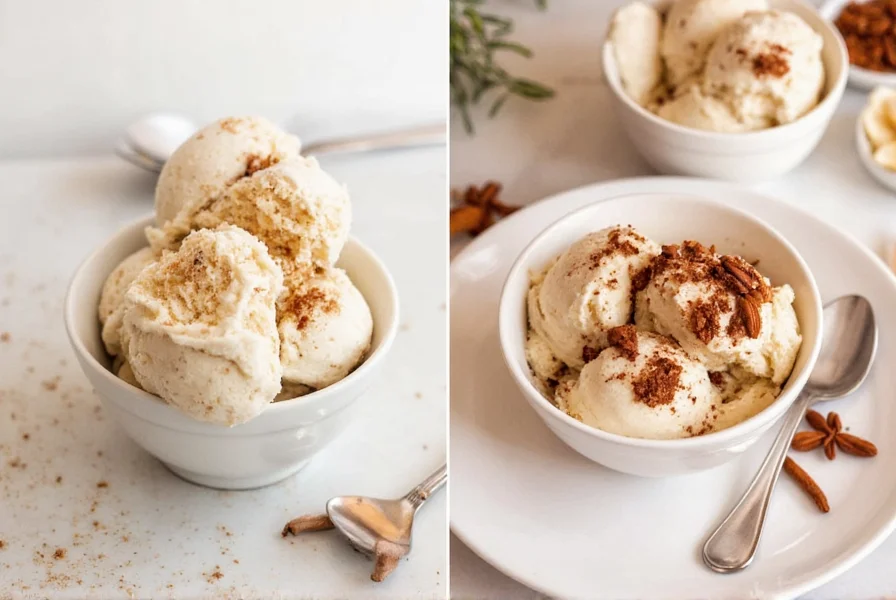
Features: Hand-harvested, flaky texture.
Advantages: Enhances sweetness without overpowering.
Use Case: Sprinkle on top after churning for balanced finish.
Target Audience: Foodies who appreciate gourmet details.
Best For: Final touch for authentic Thai dessert presentation.
Step-by-Step: How to Make Authentic Thai Coconut Ice Cream
Follow these traditional Thai methods for perfect results:
- Prepare pandan infusion: Blend 10 fresh pandan leaves with 1/2 cup water, then strain. Add the liquid to coconut milk base.
- Heat coconut milk: In a saucepan, gently heat 2 cans of full-fat coconut milk with grated palm sugar until dissolved (do not boil).
- Infuse flavors: Stir in pandan liquid and let simmer for 5 minutes. Remove from heat and cool completely.
- Churn: Pour mixture into ice cream maker and churn according to manufacturer instructions.
- Add texture: During the last 2 minutes of churning, fold in chopped fresh coconut meat.
- Freeze: Transfer to airtight container, press parchment paper on surface, and freeze for 4+ hours. Sprinkle sea salt flakes before serving.
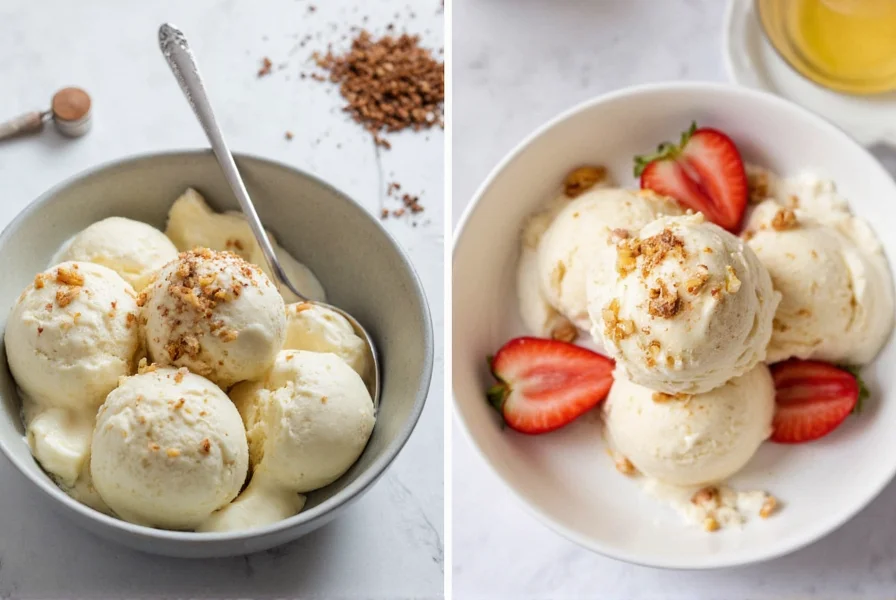
| Ingredient | Flavor Profile | Texture Impact | Usage Level | Pair Well With |
|---|---|---|---|---|
| Pandan | Grassy, vanilla-like, floral | Smooth, no texture | 1-2 tsp extract per quart | Coconut, rice, mango |
| Coconut Milk | Rich, creamy, sweet | Velvety base texture | 2 cans per quart | Pandan, palm sugar, lime |
| Palm Sugar | Caramel, molasses, earthy | Dissolves completely | 1/2 cup per quart | Coconut, ginger, tamarind |
| Coconut Meat | Intense coconut, nutty | Chewy, fibrous bits | 1/2 cup per quart | Pandan, chocolate, tropical fruits |
| Sea Salt | Savory, balancing | Dissolves or crunchy | Pinch to taste | Dark chocolate, caramel, fruit |

Frequently Asked Questions About Thai Coconut Ice Cream
What makes Thai coconut ice cream different from regular coconut ice cream?
Authentic Thai coconut ice cream uses pandan (香兰叶) as its signature flavoring, not Western spices like cinnamon or cardamom. It relies on fresh coconut milk (not cream), palm sugar (not white sugar), and often includes chunks of fresh coconut meat. The texture is lighter and more refreshing than Western-style versions, with a distinct grassy-vanilla aroma from pandan.
Can I make Thai coconut ice cream without an ice cream maker?
Yes. After preparing your pandan-infused coconut base and cooling it completely, pour it into a shallow container and freeze. Every 30-60 minutes, remove it from the freezer and vigorously stir or whisk to break up ice crystals. Repeat this process 3-4 times until you reach the desired consistency. Add coconut meat during the final stirring phase.
What's the best coconut milk to use for authentic Thai coconut ice cream?
Use full-fat, unsweetened canned coconut milk from Thai brands like Aroy-D or Chaokoh. Avoid "light" coconut milk or products with additives. For best results, refrigerate the can overnight, then scoop out the thick cream layer that rises to the top — this is the key to authentic texture and flavor.
How long does homemade Thai coconut ice cream last in the freezer?
Properly stored in an airtight container with parchment paper pressed directly on the surface, homemade Thai coconut ice cream will last for 1-2 weeks in the freezer. The natural preservative properties of palm sugar help maintain freshness longer than versions made with white sugar. For optimal flavor, consume within the first week.
Can I substitute white sugar for palm sugar in this recipe?
Yes, but it will change the authenticity. Palm sugar has complex caramel notes that white sugar lacks. If substituting, use 3/4 cup white sugar for every 1 cup palm sugar and add 1/2 tsp molasses to mimic the depth. However, for true Thai flavor, palm sugar is essential — it's a core ingredient in Thai cuisine.

Final Scoop: Master Thailand's Iconic Dessert
The key to unforgettable Coconut Ice Cream Thailand lies in respecting traditional ingredients and techniques. By using pandan, fresh coconut milk, and palm sugar — not Western spices — you'll capture the true essence of this iconic Thai dessert. These ingredients have been perfected over centuries in Thai kitchens, and their natural synergy creates a refreshing, aromatic treat that's impossible to replicate with shortcuts.
Whether you're a seasoned chef or just starting your Thai cooking journey, remember: authenticity comes from honoring the ingredients that define Thai cuisine. A pinch of salt and a whisper of pandan can transform a simple dessert into a taste of Thailand.
Now go ahead — gather your authentic ingredients, follow these traditional steps, and treat yourself to a bowl of genuine Thai coconut ice cream perfection.
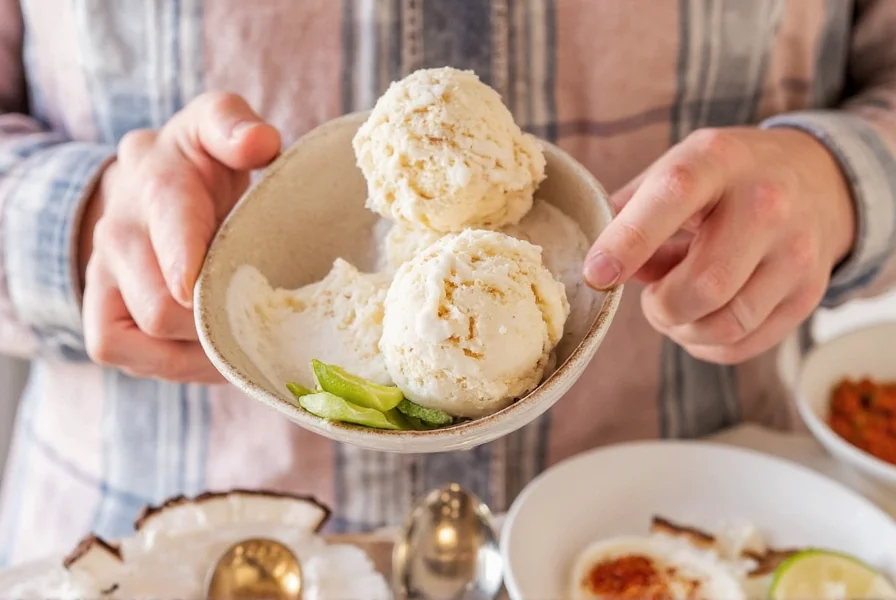

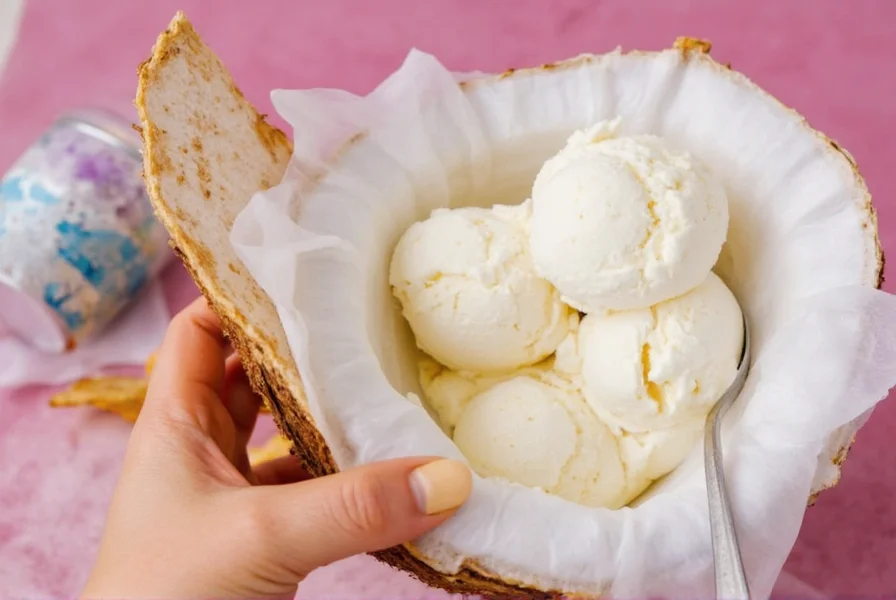









 浙公网安备
33010002000092号
浙公网安备
33010002000092号 浙B2-20120091-4
浙B2-20120091-4